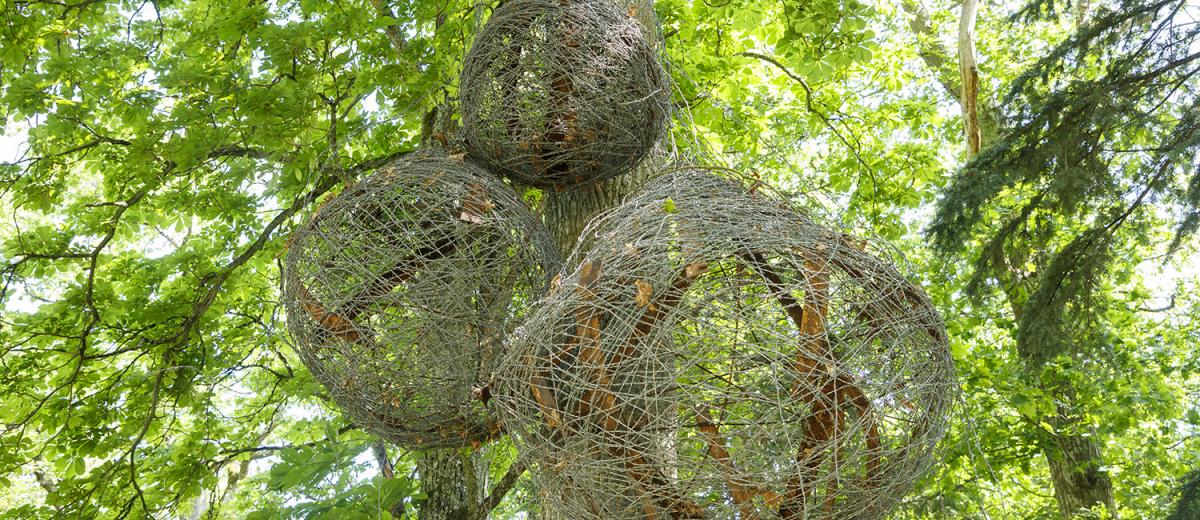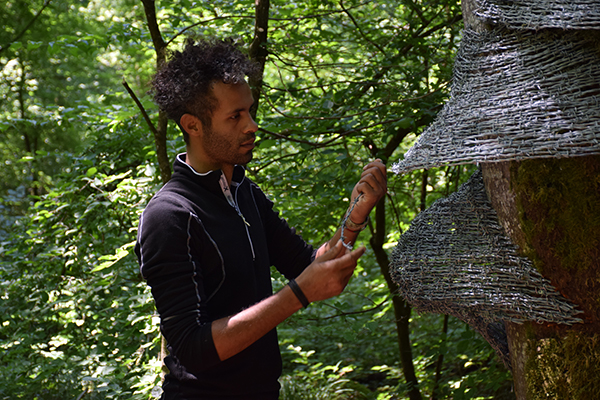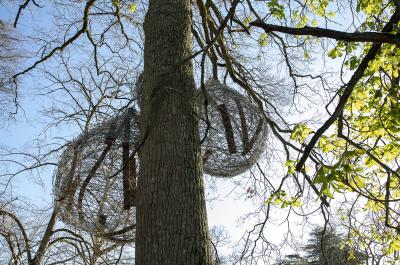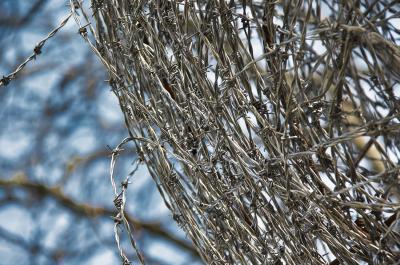08. Abdul Rahman Katanani
"Renaissance"

Abdul Rahman Katanani uses barbed wire, corrugated iron, pieces of wood and recycled petrol cans. These reused materials are actually items of ‘domestic’ life for the Palestinian artist. Katanani was born and grew up on Sabra refugee camp in Lebanon, in a community of stateless citizens.
At the age of fifteen, he devoted himself to caricature and began to get a name for himself thanks to his satirical drawings, in which he pinpointed the corruption and misappropriations regarding United Nations subsidies, something he witnessed every day living on the camp. He was accepted into the Beirut School of Fine Arts and there, he developed an artistic style that was in line with his lifestyle, laying the foundations for a complex artwork where the reused materials and objects depicted both individual and collective experiences, sometimes in a very literal way, sometimes more symbolically or using imagery.
His most famous work includes the monumental waves made from barbed wire woven by hand, silhouettes of children made from corrugated iron, and olive trees where the barbed wire once again represents a vicious and gleaming network of branches. He also created some major installations such as Camp, the symbolic representation of a refugee camp, that he presented in 2017 at Danysz Gallery. He still has a penchant for a refined appearance, as he says that it is above all ‘a way of attracting attention’, or in other words, an invitation to discover something new to talk about.
The use of recycled materials or even the topics addressed by the artist should not be considered as an expression of binding determinism, that would make the artist a refugee irrevocably and unconditionally, but rather as the beginning of an intellectual journey. Katanani’s artistic technique is a liberating process that transforms personal experience into a way of interpreting the world, into a personal odyssey and into an inter-personal adventure whereby the viewer is plunged into the artist’s universe.
Notions of progression, travelling - of movement, really - are key to the work of the artist, for whom everything is about dynamic design. Often his artworks represent a spiral, a vortex, a tornado, allegories of the political and religious whirlwind that has affected the Middle East for so long. “For me, says the artist, the Palestinian cause should not be considered as a vicious circle, but as a tornado that picks up all the happiness, dreams, energy, people on its way, and spins off into the unknown.”
The danger now is to remain static, or in other words imprisoned in given conditions of existence, and especially within one’s own walls. In Katanani’s work, the artistic process should be understood as a journey towards a liberating horizon, and the barbed wire as an imaginary barrier. “I was raised, he says, in the harsh reality of Palestine’s occupation and of the border that had been marked out. I realised later on that within us, we all have borders and occupations that can be much more effective.”
BIOGRAPHICAL NOTES

Abdul Rahman Katanani was born in 1983 in the Sabra refugee camp, in Lebanon. He has a Master’s degree from Beirut School of Fine Arts.
His work has been displayed in a great number of institutions all over the world, including the Abu Dhabi Biennale, the Royal College of London, the Cité Internationale des Arts, and the Arab World Institute in Paris.
His artworks are presented in public (Mathaf, Doha) and private collections. He lives between Paris and Beirut.


